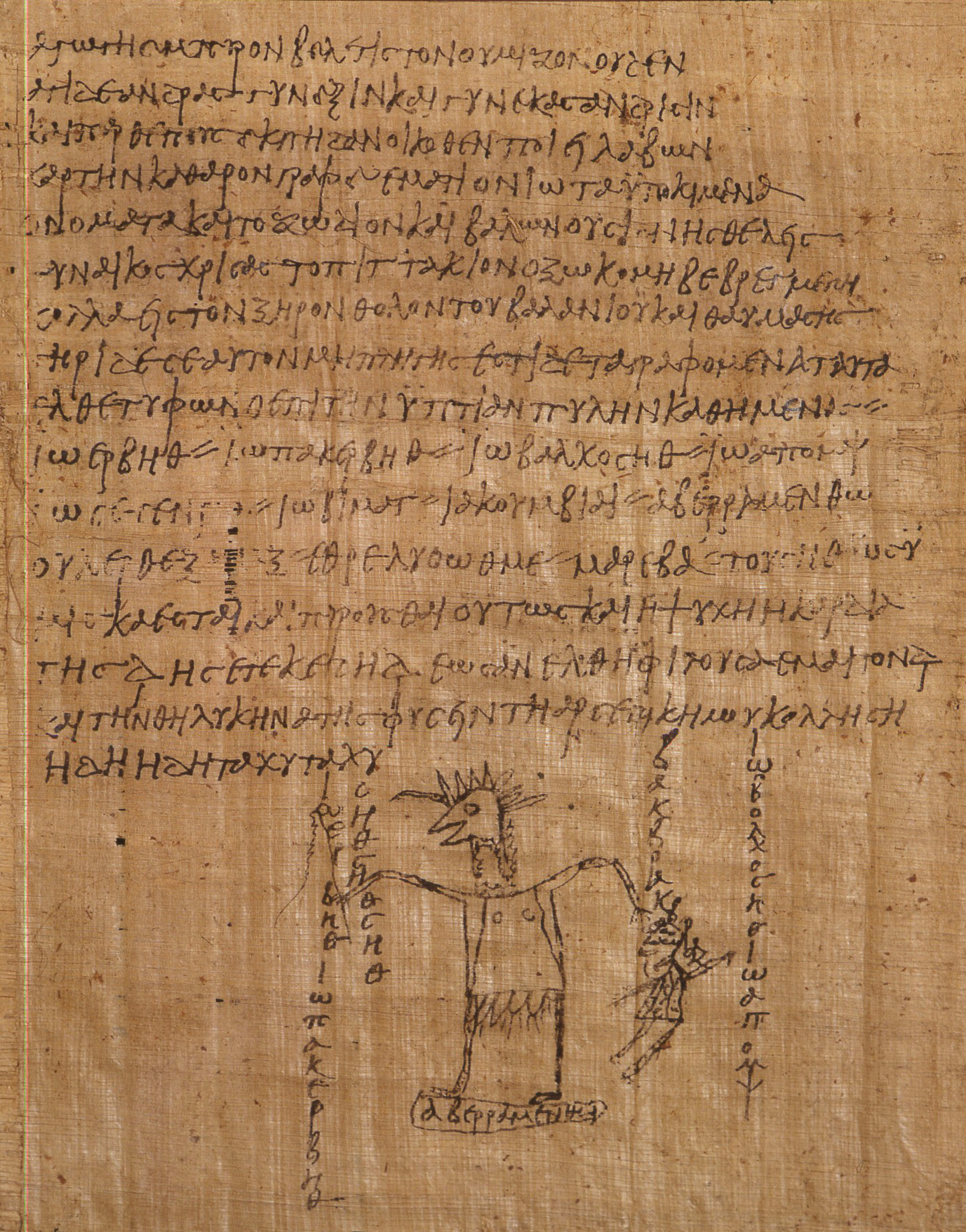What did a young man in the fourth century CE wish from life? Not much different from what young men today might desire: professional success, favour with others, and, of course, women.
His means of attaining his goals were, however, not that familiar to the modern reader. He resorted to a long roll filled with Greek magical charms, a papyrus now kept in the Oslo University Library, which promised him immediate success with all these things. Or as the title of the second spell suggests: “Charm to restrain anger, to secure favour and an excellent charm for gaining victory in the courts. It works even against kings, no charm is greater.” Who would not want that? And it was easy to perform. All our ambitious young man needed to do was to write with a bronze pen on a silver foil (lamella) the figures and signs below, and wear the result under his garment.

Our young man was perhaps a lawyer or was involved in local politics, as many ambitious young men in the period were, hence his interest in winning court cases, reflected in another charm for “gaining the favour of people in your presence and of crowds.” Victory could be achieved by restraining the tongue of the advocate of the adversary as well, as the first charm of the roll promises. A prudent man moreover counts on the other party using a similar charm against him, and learns “a charm to break all spells,” which included drawing this cute figure on a lead foil:

Gaining favour and restraining the evil intentions and gossip of adversaries is a general desire, and it is all the better if you can achieve it by simply holding your thumbs and saying a short prayer seven times: “Ermalloth archimalloth, stop the mouths that speak against me, because I glorify your sacred and honoured names which are in heaven.” (If it does not work, you might be holding your thumbs in the wrong way. You can also try saying a much longer prayer to Helios, the Sun-god, provided a few columns below.)

However, the main concern of our fourth-century young man, as of young men in all ages, was getting women. For attaining his goal he collected seven “irresistible love spells of attraction,” the most efficient dating tricks available, since they also worked against the will of the woman. The user of these charms never needed to take no for no again if he could also command a cock-headed demon to set the soul of the desired woman on fire until she rushes out of her home and, as the spell says, “glues her female pudenda to my male one” (just to make sure the demon does not misunderstand his job).

Once our young man attained the woman he wanted, he could resort to another charm to ensure her faithfulness, the “pudenda key spell,” to be recited over a balm which is then applied to the penis before lovemaking. As a result, “she will love you alone and by no one else will she be laid,” ensures the spell. And another useful thing for ambitious young men, a contraceptive charm, “the only one in the world.”
In short, this impressive roll of over two meters contained a lot of things that a young man in the fourth century (or indeed in any time) would need for professional and personal success. If the charms worked we do not know, but many needed desperate users, since they involved blood from a bat, gall of a river electric eel, the umbilical cord of a firstborn ram, and manipulating dangerous demons. Try only at own risk!
Technical Details
Provenance: Egypt, Fayum
Date: ca. 350 CE
Language: Greek
Collection: University Library, Oslo
Designation: P.Oslo I 1 = Pap.Graec.Mag. XXXVI (following the Checklist of Editions)
Translation: Hans Dietrich Betz (ed.), The Greek Magical Papyri in Translation. Chicago: The University of Chicago Press, 1986.
Bibliography: William M. Brashear, “The Greek Magical Papyri: An Introduction and Survey; Annotated Bibliography (1928–1994)”, in Aufstieg und Niedergang der römischen WeltII. 18.5. Berlin, 1995, 3552–3553; Todd Hickey, Anastasia Maravela, Michael Zellmann-Rohrer, “Historical and Textual Notes on Magical Texts in the Papyrus Collection of the University of Oslo Library”, Symbolae Osloenses: Norwegian Journal of Greek and Latin Studies 89 (2015), 156–185.